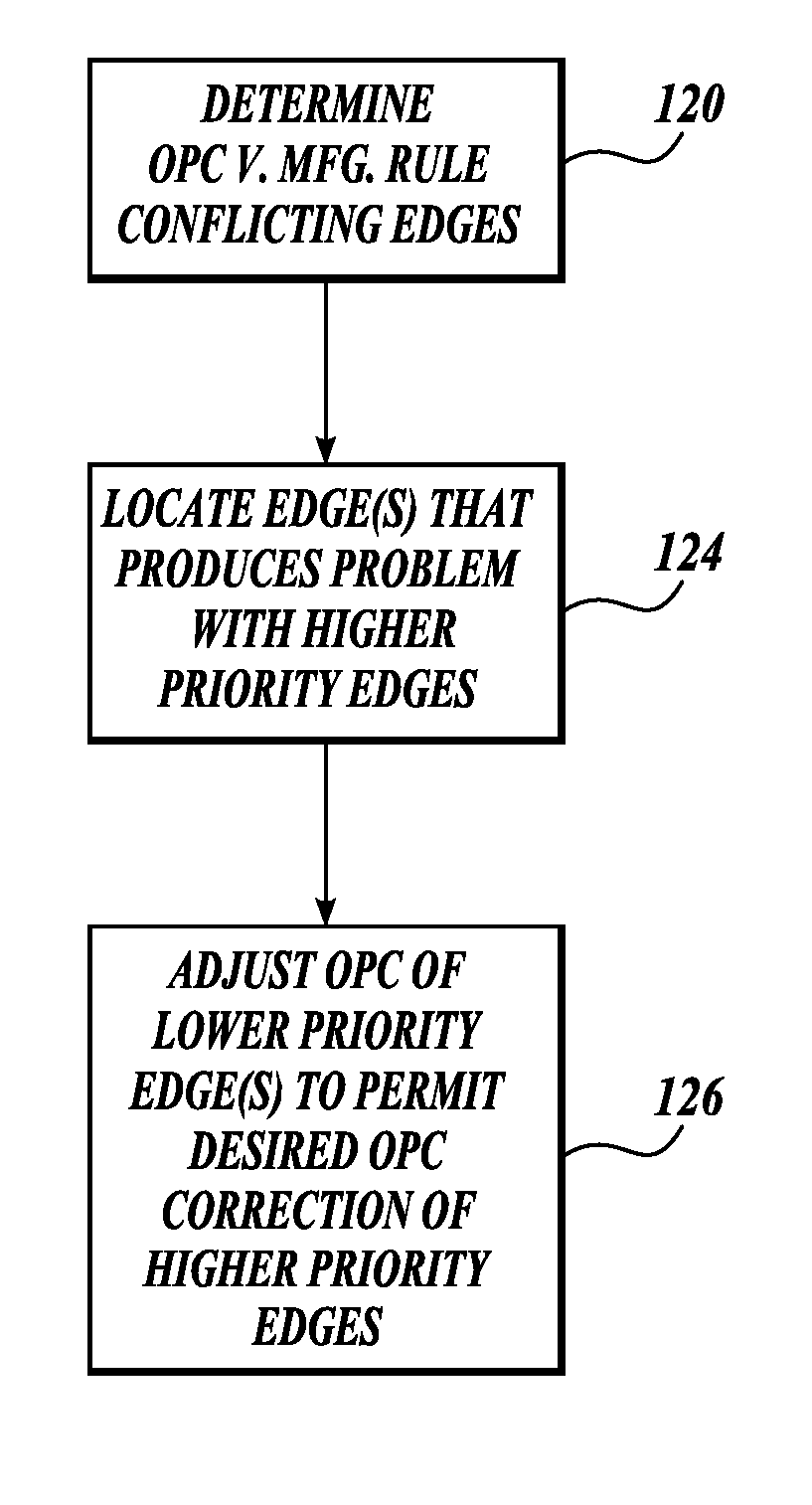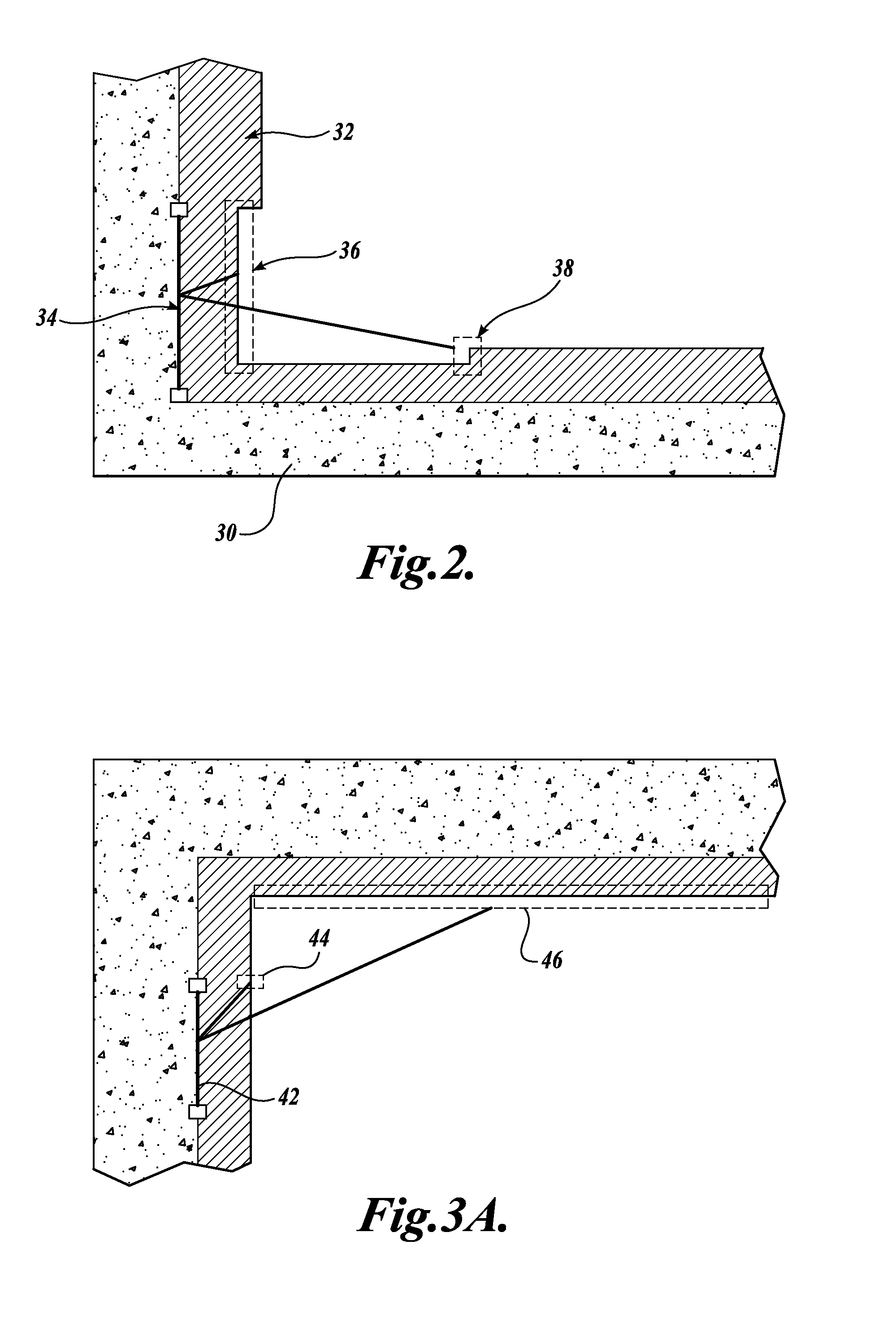OPC conflict identification and edge priority system
a conflict identification and edge priority technology, applied in the field of integrated circuit verification systems, can solve the problems of reducing the performance of the resulting ic, the fringing effect of the illumination light producing errors on the wafer, and the difficulty in accurately forming features with the photolithographic process, so as to achieve better opc results and better opc correction
- Summary
- Abstract
- Description
- Claims
- Application Information
AI Technical Summary
Benefits of technology
Problems solved by technology
Method used
Image
Examples
Embodiment Construction
[0016] As indicated above, one aspect of the present invention is a system for performing IC layout data verification that alerts a circuit designer where an optical and process correction (OPC) tool may produce a less than optimal result due to a conflict with other system constraints. As shown in FIG. 1, the layout verification system includes a computer system 10 that receives data from a file 12 containing an IC layout design. The IC layout data may be in a standard layout language such as GDS II, OASIS, or other known formats for describing an IC layout design. In a GDS II layout file, each feature to be created on a wafer is described as a number of vertices that define a polygon outlining the shape of the feature or other structure such as a phase shifter, assist bar, etc., to be created in the circuit. The computer system 10 verifies the layout design with the use of a number of software tools including an OPC tool 14. The OPC tool 14 attempts to modify the edges of the poly...
PUM
| Property | Measurement | Unit |
|---|---|---|
| density | aaaaa | aaaaa |
| size | aaaaa | aaaaa |
| wavelength | aaaaa | aaaaa |
Abstract
Description
Claims
Application Information
 Login to View More
Login to View More - R&D
- Intellectual Property
- Life Sciences
- Materials
- Tech Scout
- Unparalleled Data Quality
- Higher Quality Content
- 60% Fewer Hallucinations
Browse by: Latest US Patents, China's latest patents, Technical Efficacy Thesaurus, Application Domain, Technology Topic, Popular Technical Reports.
© 2025 PatSnap. All rights reserved.Legal|Privacy policy|Modern Slavery Act Transparency Statement|Sitemap|About US| Contact US: help@patsnap.com



